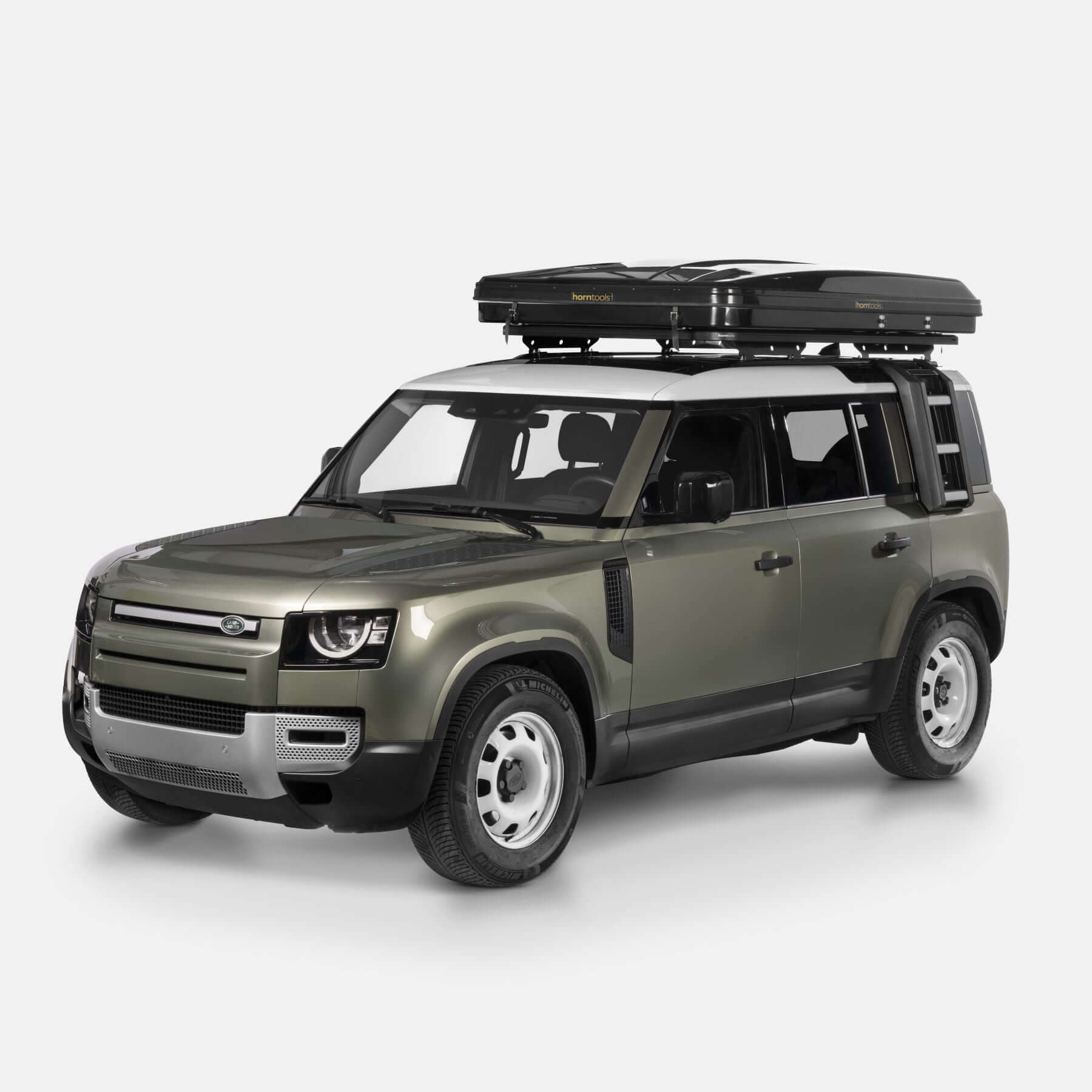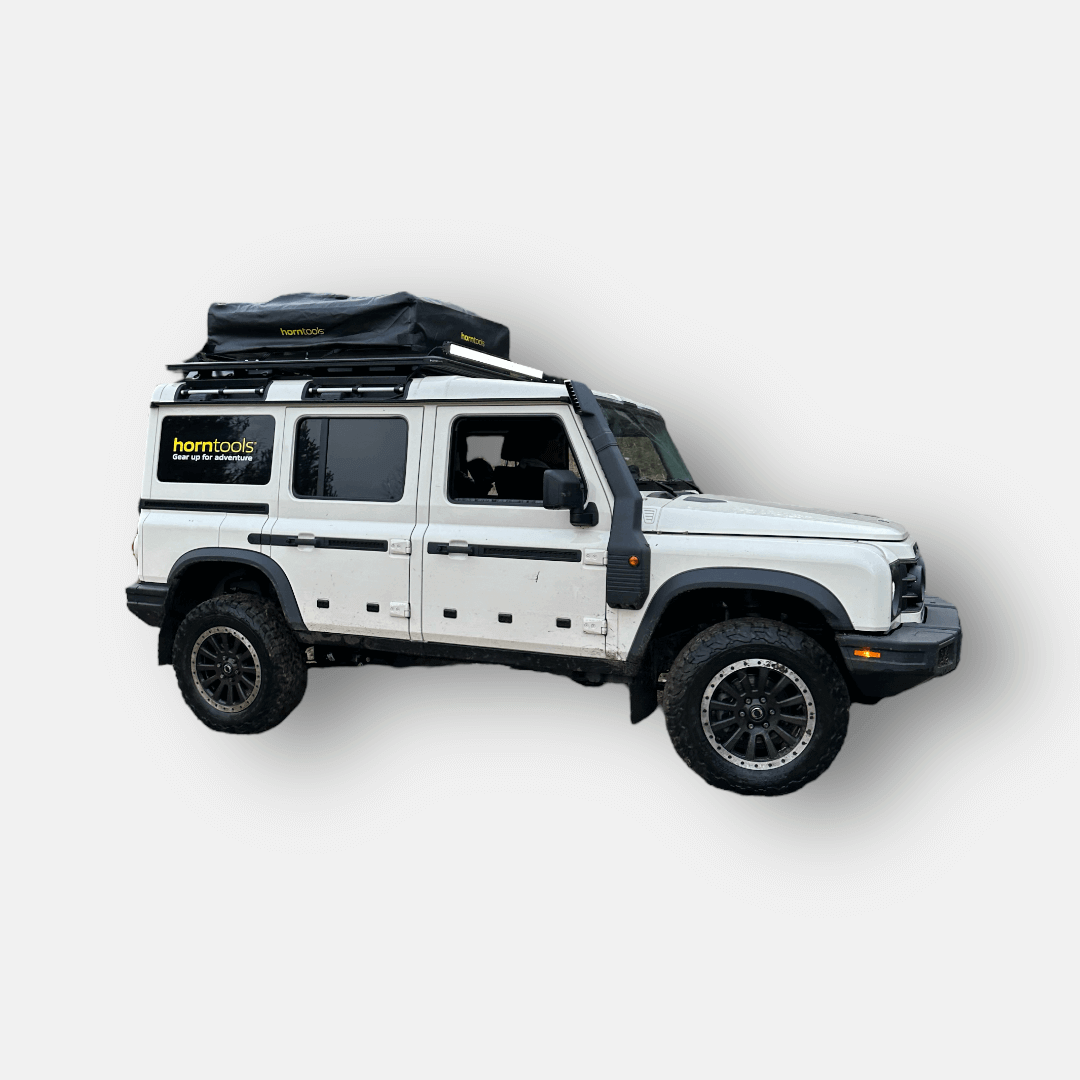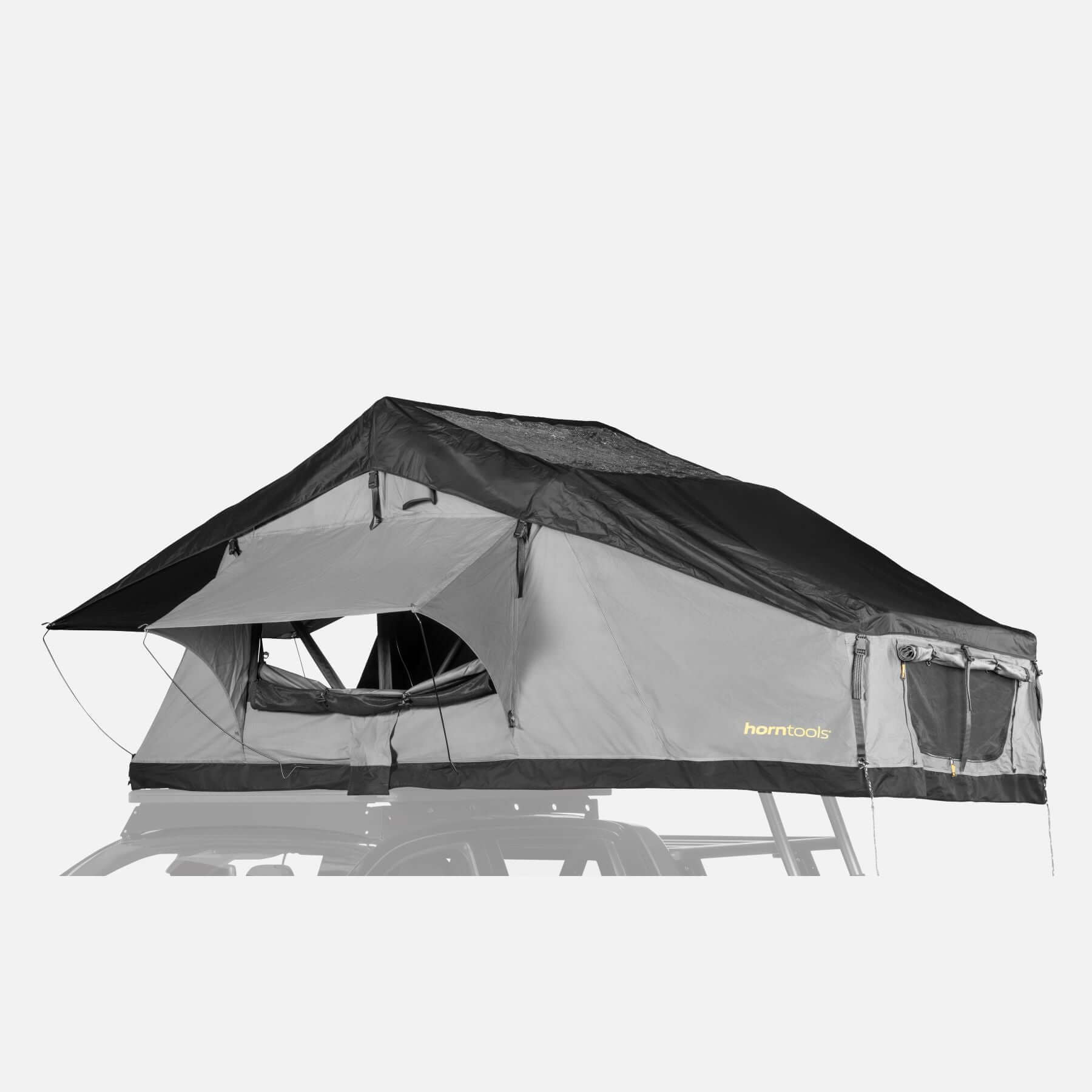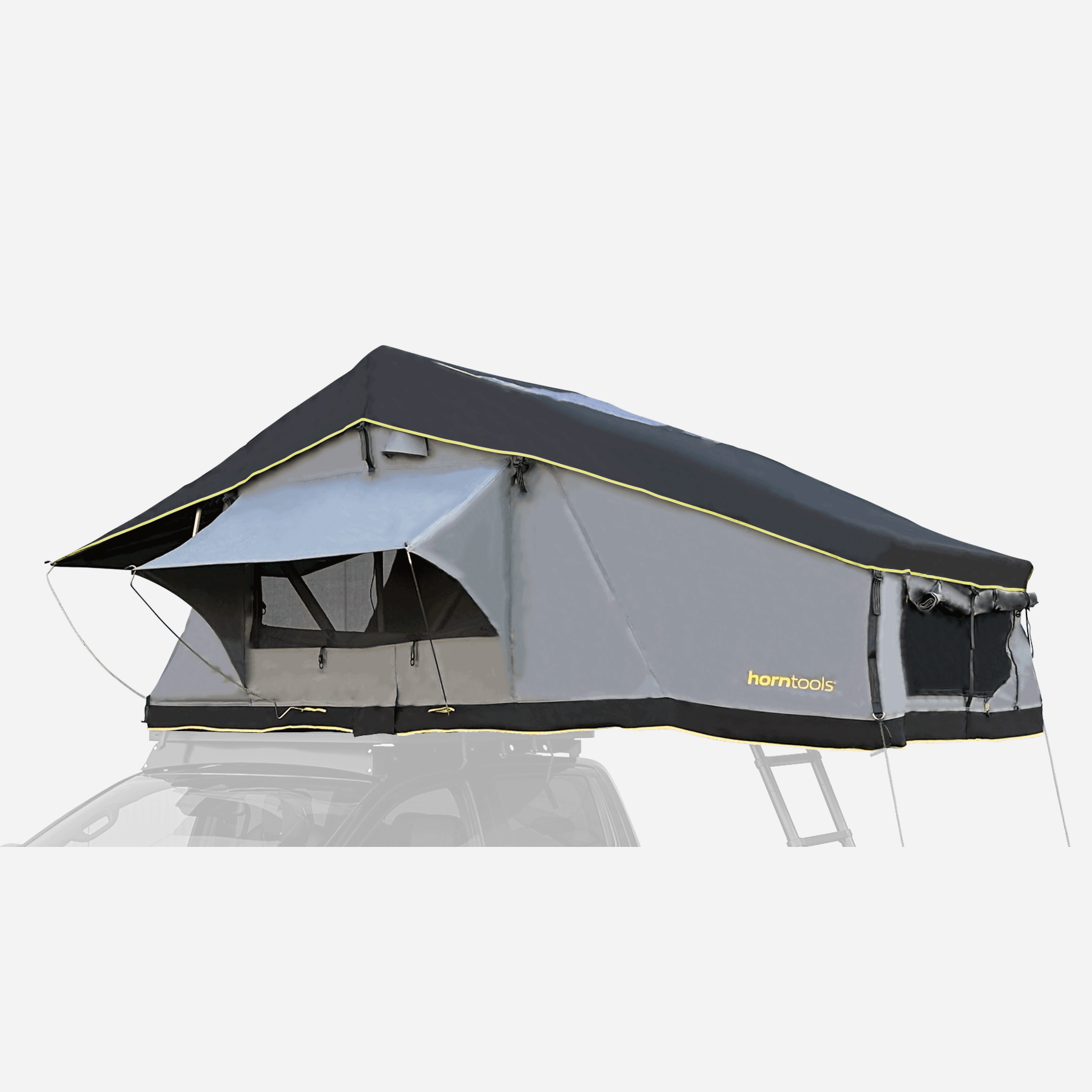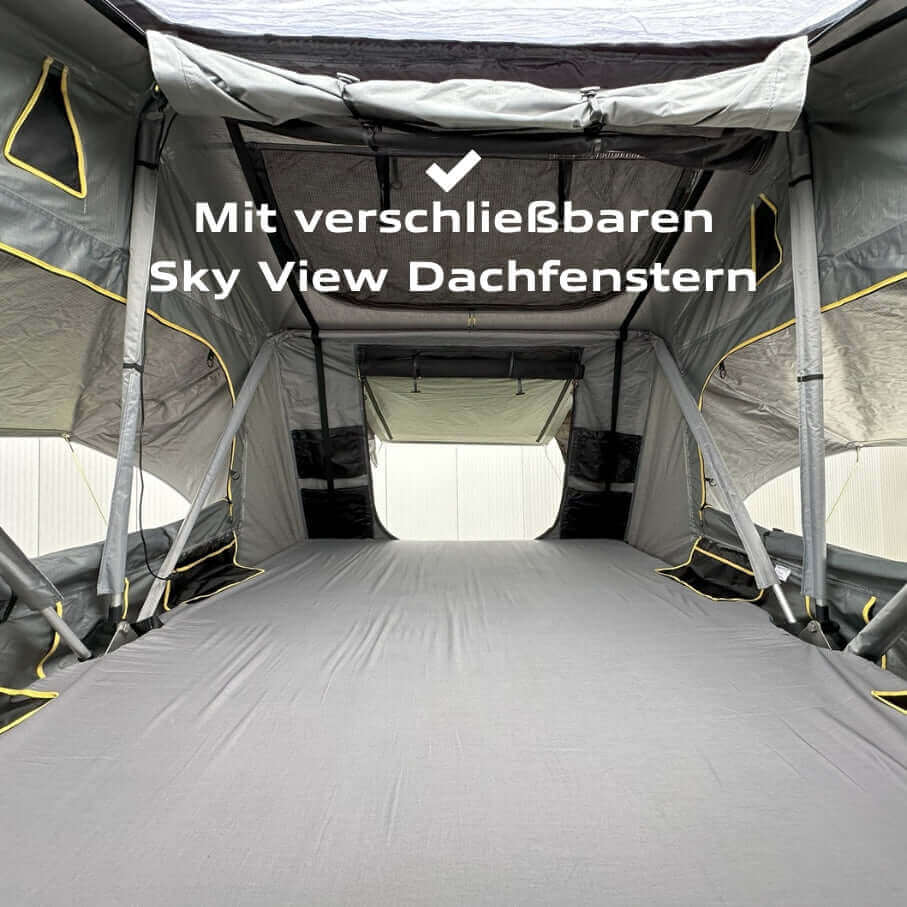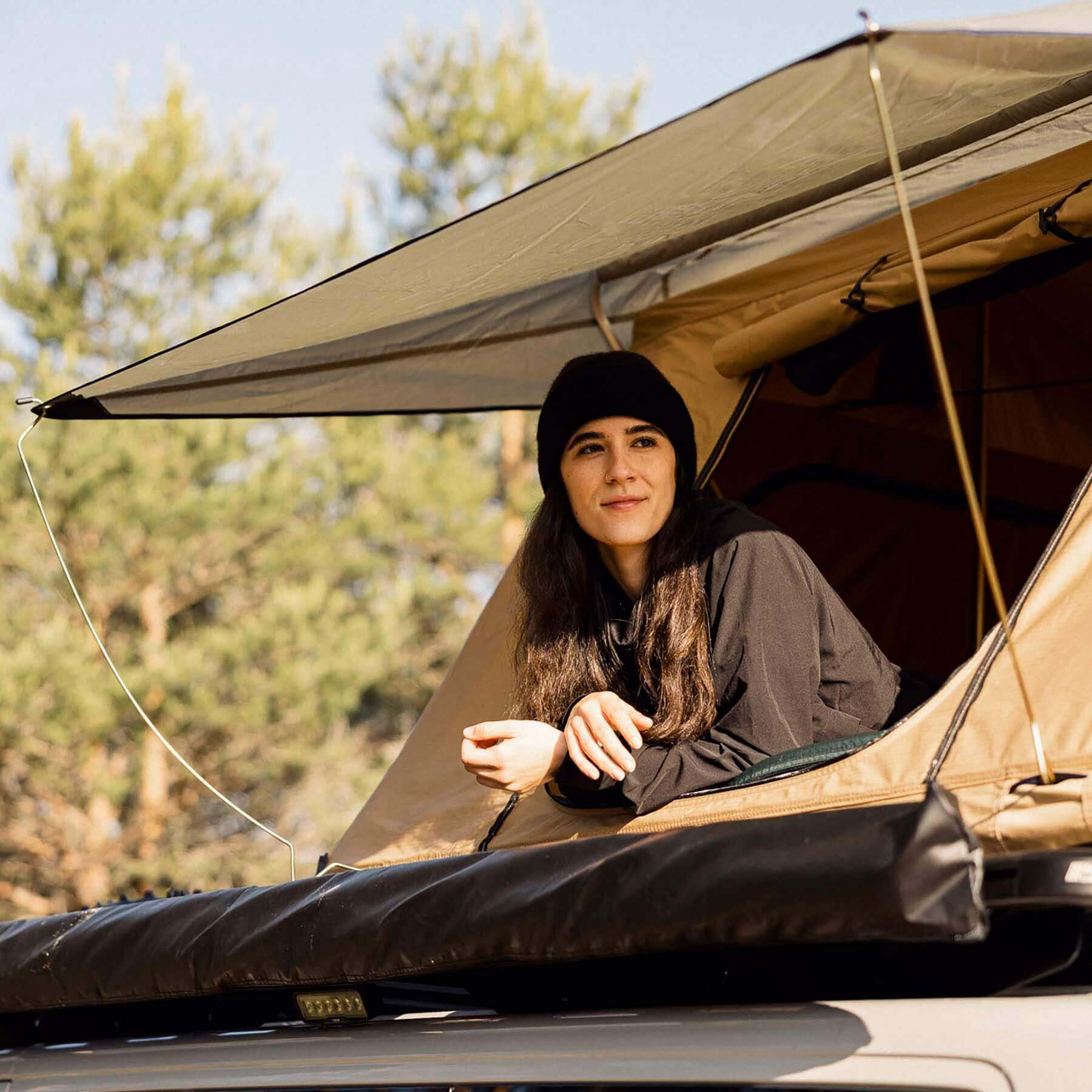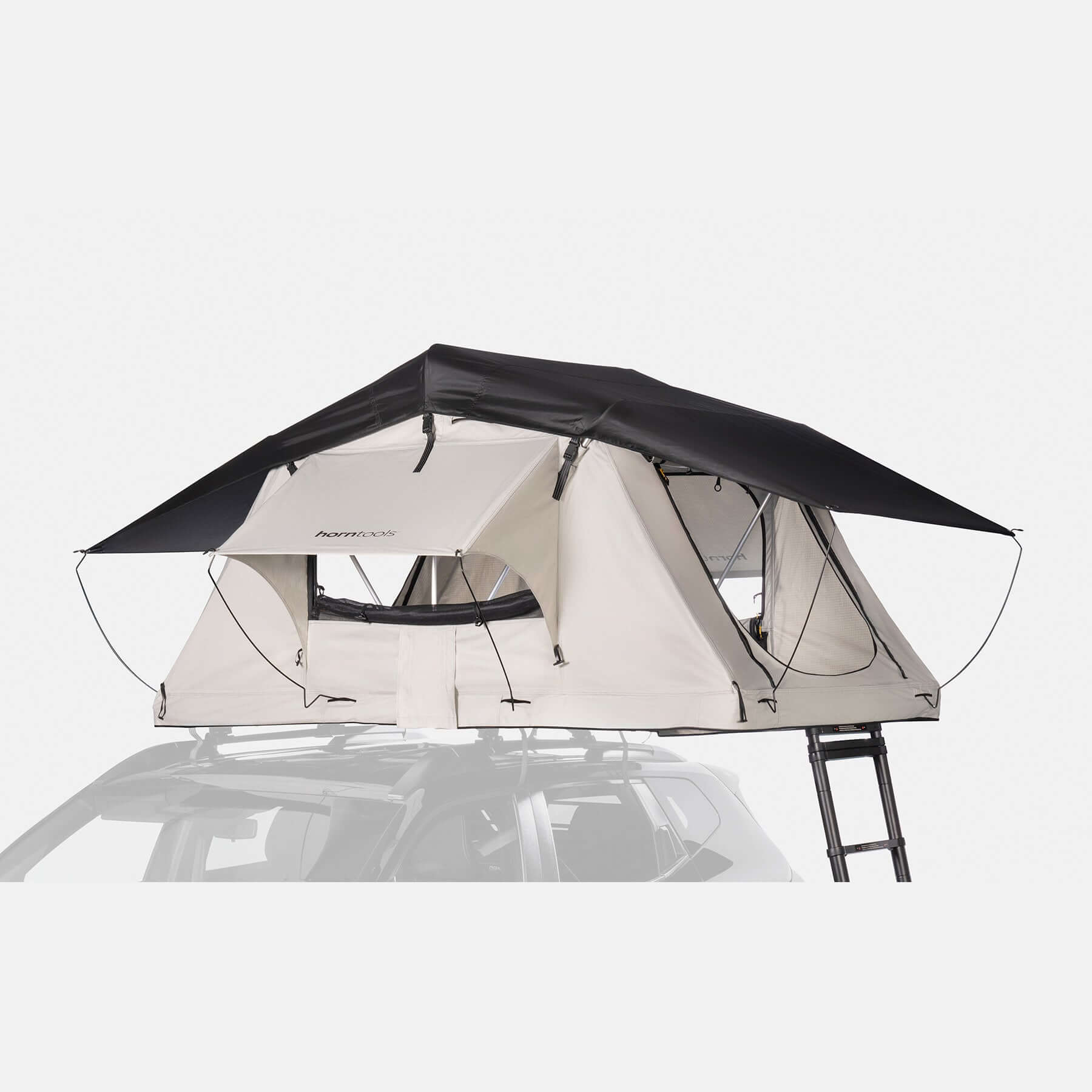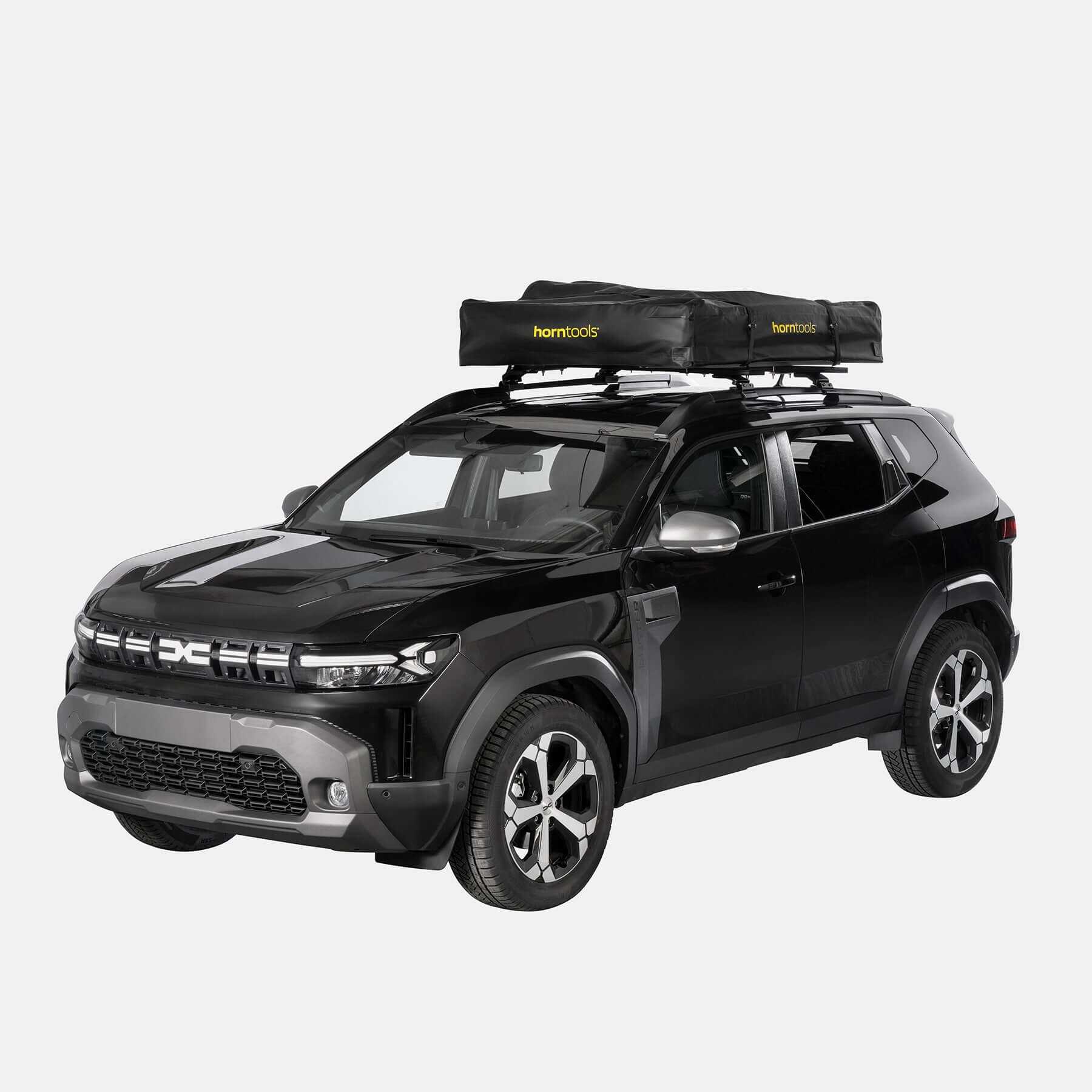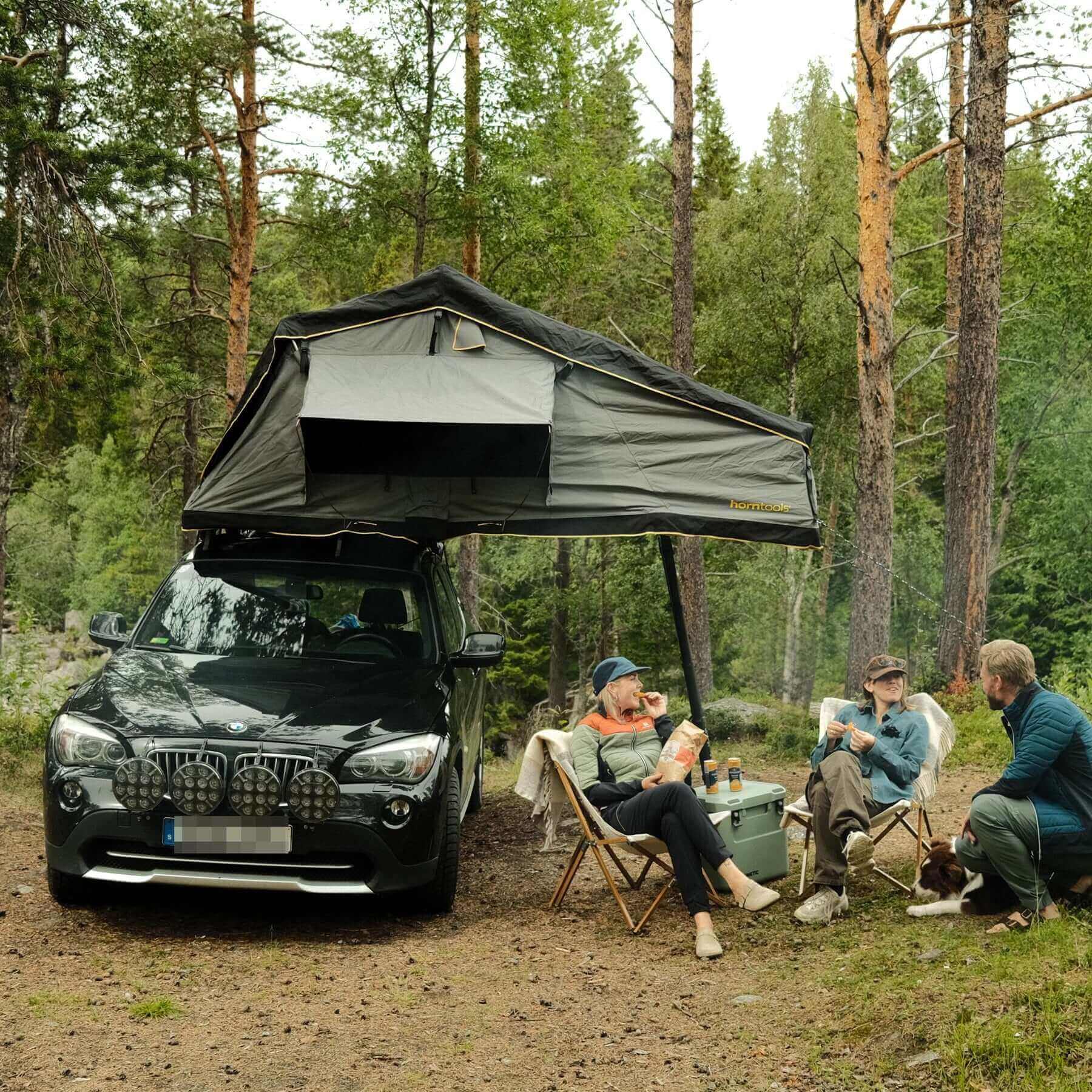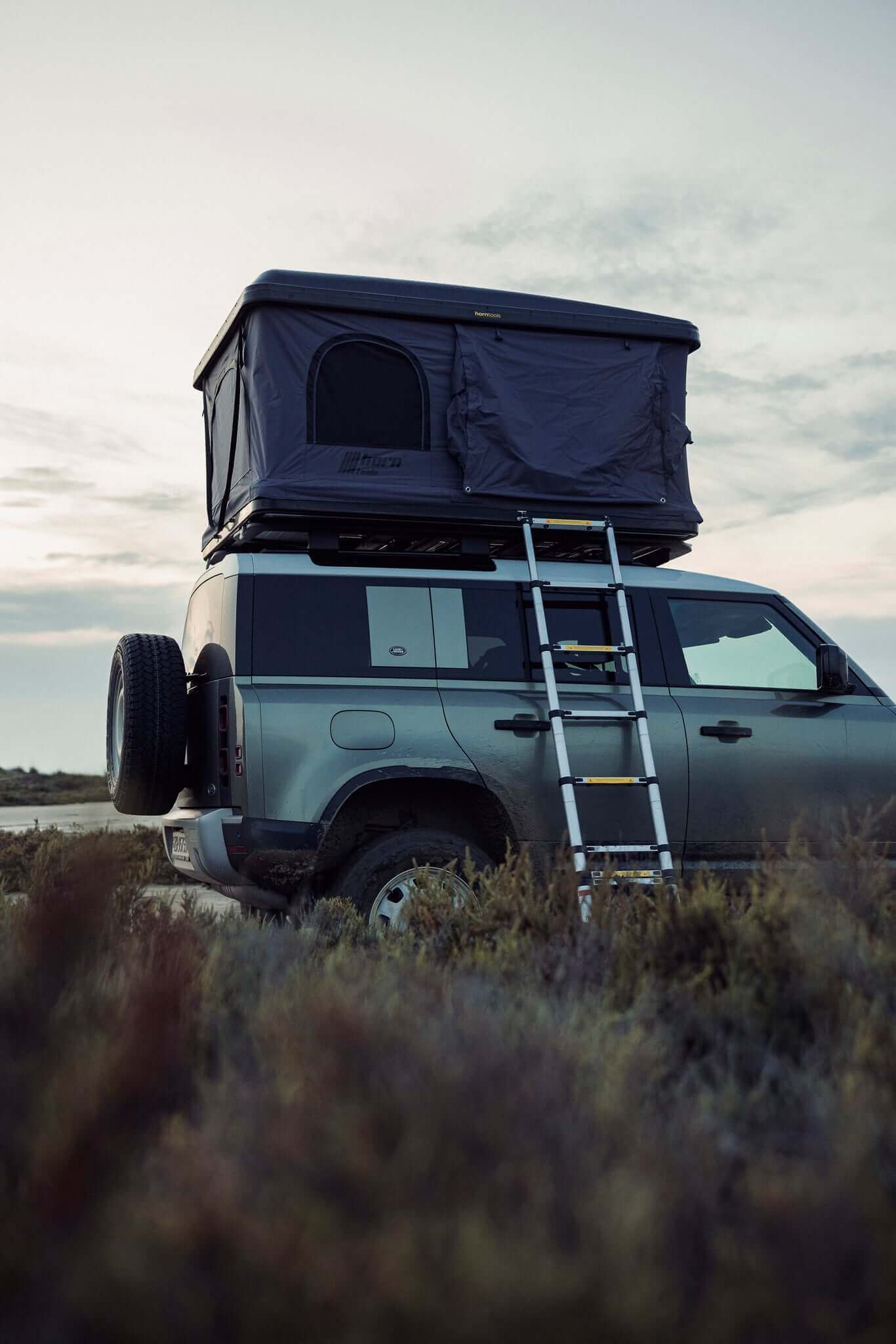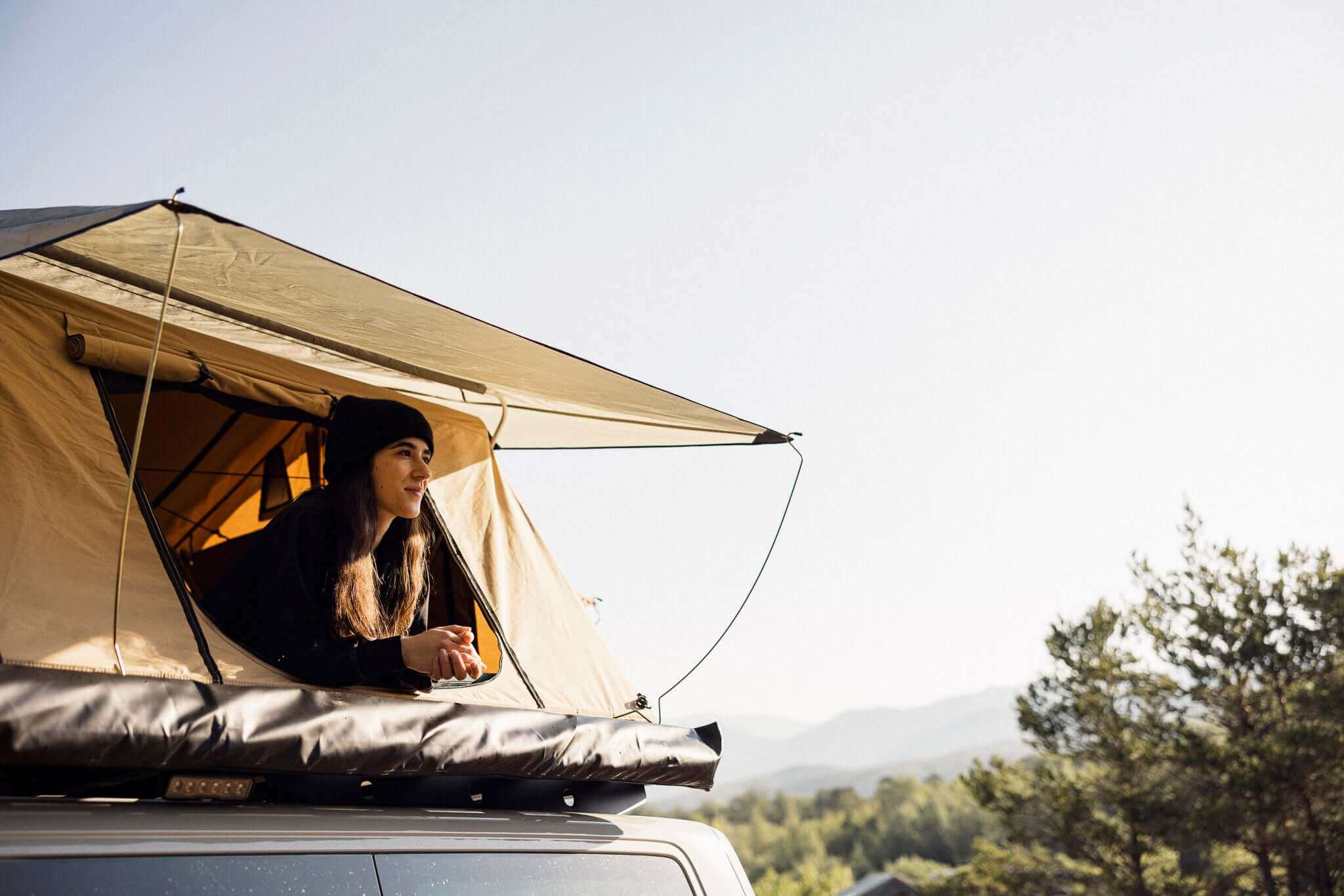The perfect roof tent for your vehicle
Hard shell roof tent & folding tents
Discover the ideal roof tent for your next adventure by car. Choose from our three models to be perfectly equipped.
We are the test winner! ‘Convincing in terms of features, functionality, size, price and workmanship: With the best overall package, the GRP roof tent from Horntools deserves the test victory and a clear recommendation to buy.’

An overview of the horntools models
Are you still unsure which horntools model is right for you? Here you will find the most important information about our roof tents summarized in a clear comparison.
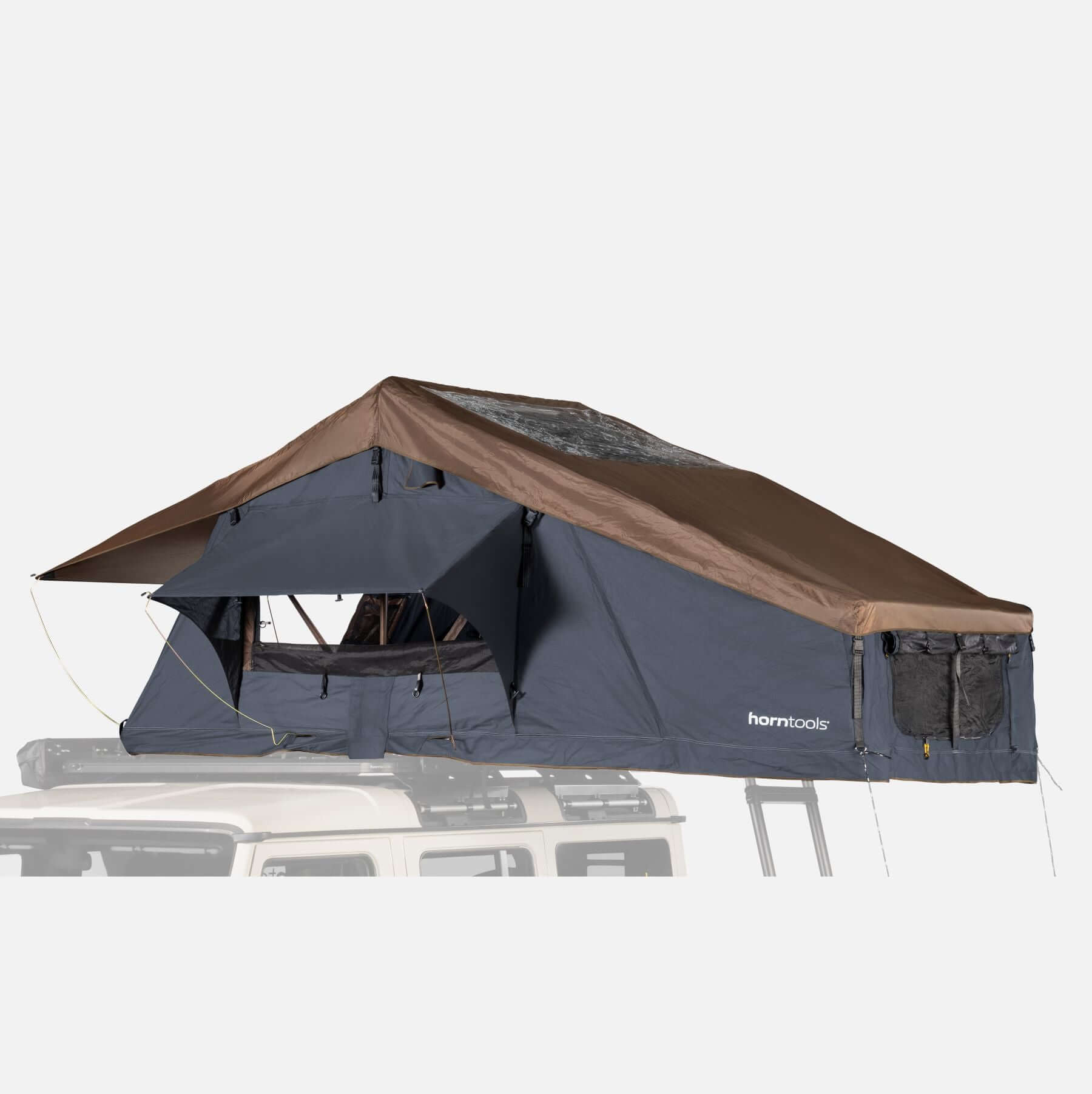
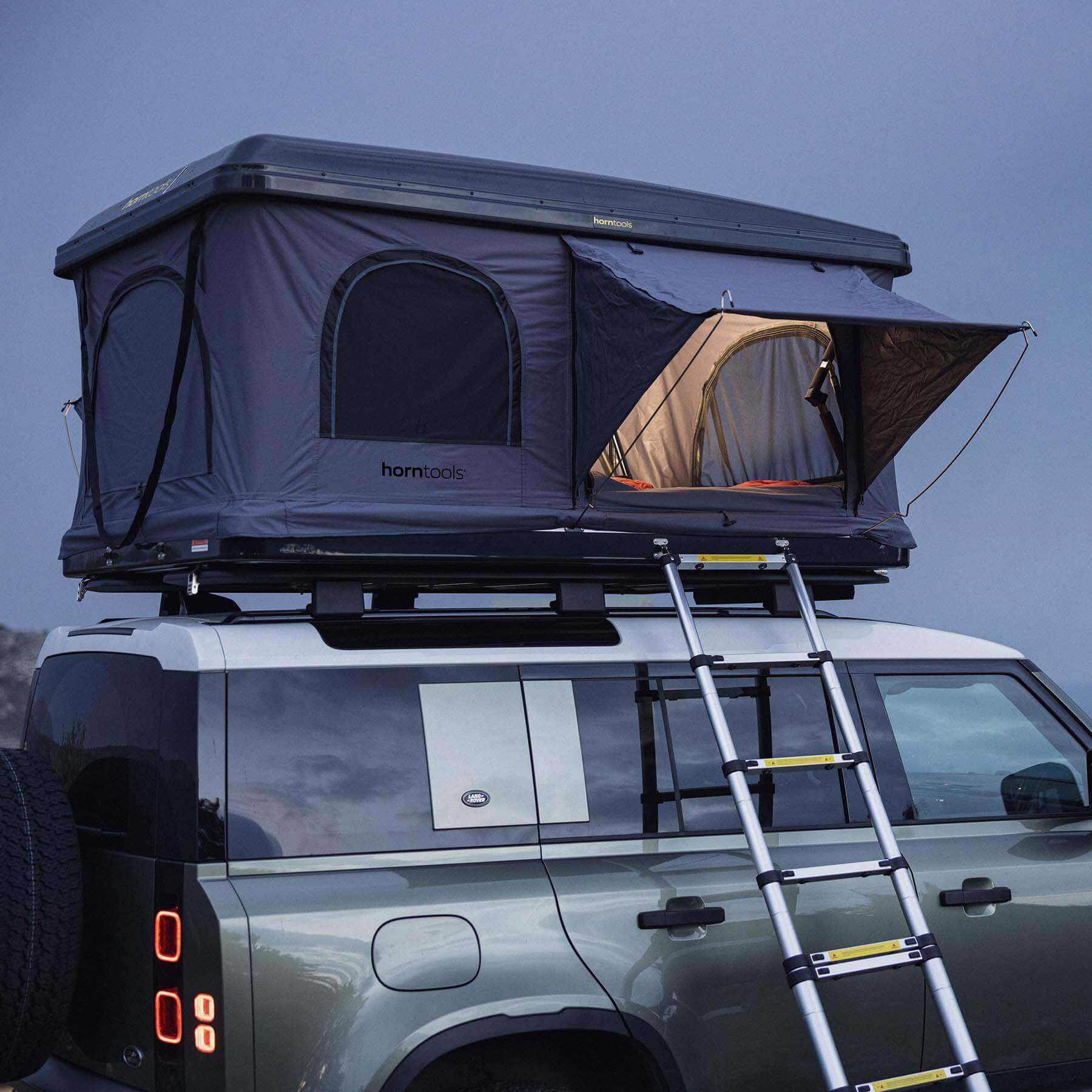
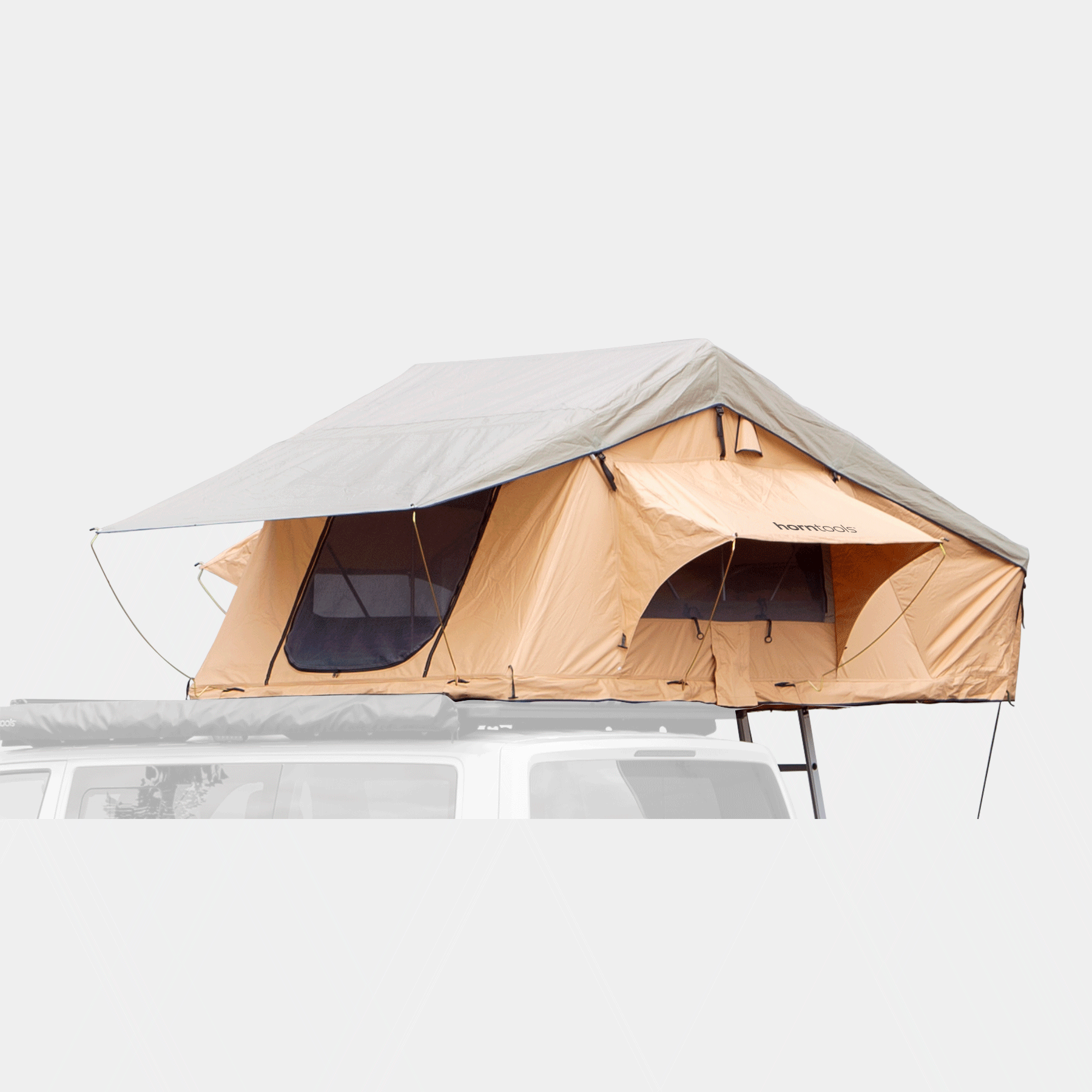



Folding roof tent
Hard shell roof tent
Folding roof tent
320 x 140 / 165 / 220 x 130 cm
220 x 150 / 165 x 30 cm
320 x 140 / 165 / 220 x 130 cm
2 to 4 persons
(= 2 adults and 2 children)
depending on model
2 persons
1 person up to 4 persons
(= 2 adults and 2 children)
depending on model
63 - 92 kg
depending on model
70 - 82 kg
45,5 - 78 kg
depending on model
2,290 - 3,590 €
2,990 €
1,590 - 2,490 €
Navy blue (Ocean) or gray (Stone)
Grey
Sand
✓
✓
✓
✓
✓
✓
300g/m² Canvas with PU coating, 35% Cotton, 65% Polyester (Water column: 2000 mm)
Cotton, Canvas with PU coating (Water column: 2000 mm)
280 g Ripstop Canvas, 65 % Polyester, 35 % Cotton (Water column: 2000 mm)
15 min
3 min
10 min
✓
✖
✖
✓
✖
✓
✓
✓
✖
- Roof tent with cover
- Rain cover
- Guy poles
- Fastening material
- Black telescopic ladder
- LED lights incl. cable
- Mattress (8 cm cold foam)
- 3D mesh mattress base
- Shoe bag
- Operating & care instructions
- Roof tent with hard shell
- Fastening material
- Shoe bag
- Organiser bag
- Telescopic ladder with bag
- LED interior lighting
- Mattress (7 cm memory foam)
- 3D mesh mattress base
- Operation & care instructions
- Roof tent with cover
- Rain cover
- Bracing poles
- Fastening material
- Aluminium ladder
- Mattress (8 cm cold foam)
- Operating & care instructions
*all roof tents are supplied with a ladder, mattress and the necessary fastening material and tools
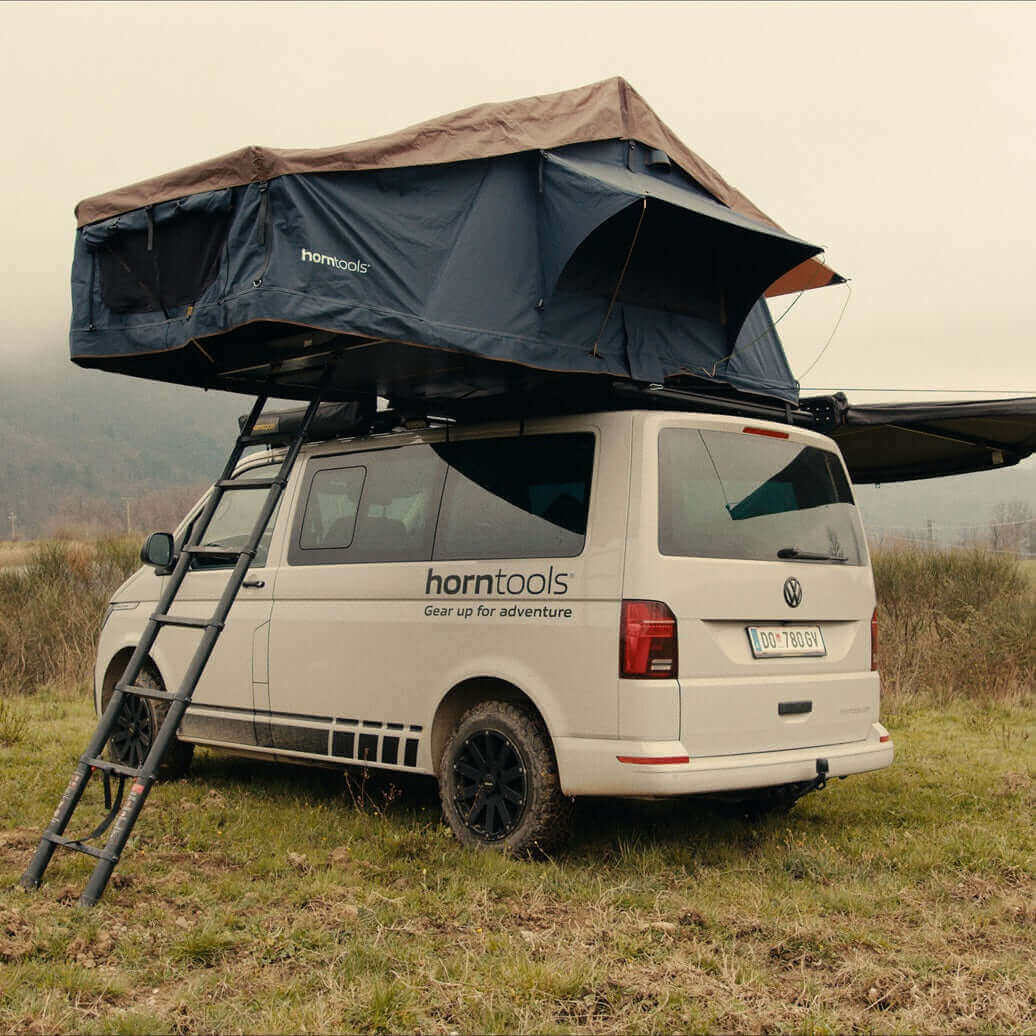
Ocean & Stone
Elements
The brand new Elements roof tent combines our many years of experience in the roof tent sector. It comes in the versions “Ocean” (navy blue) & “Stone” (grey) and has some exciting features.
Discover our Elements (Ocean)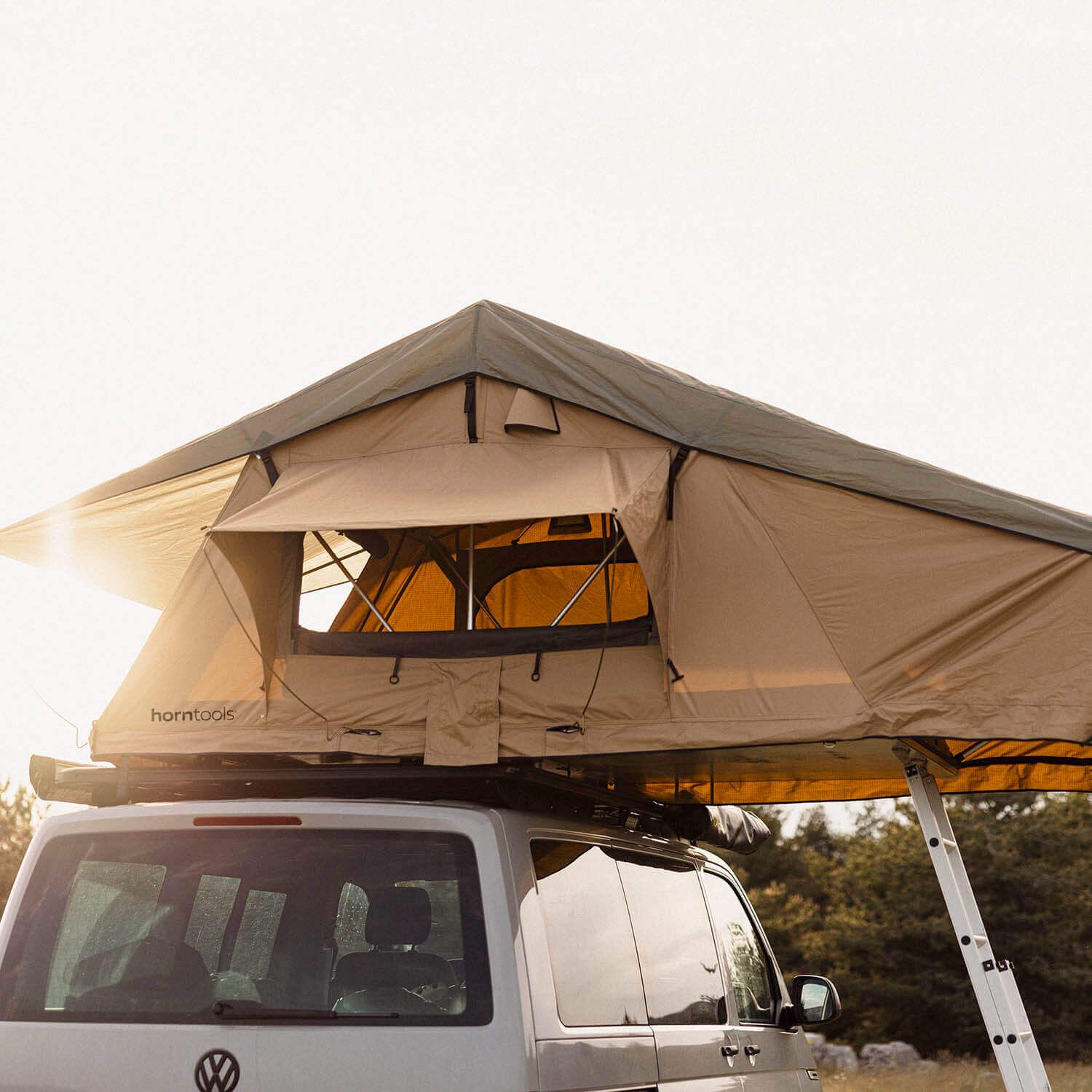
Desert
The folding tent for all areas of use. Loved and optimized for years. A compact tent in many sizes, for all vehicles.
Discover our Desert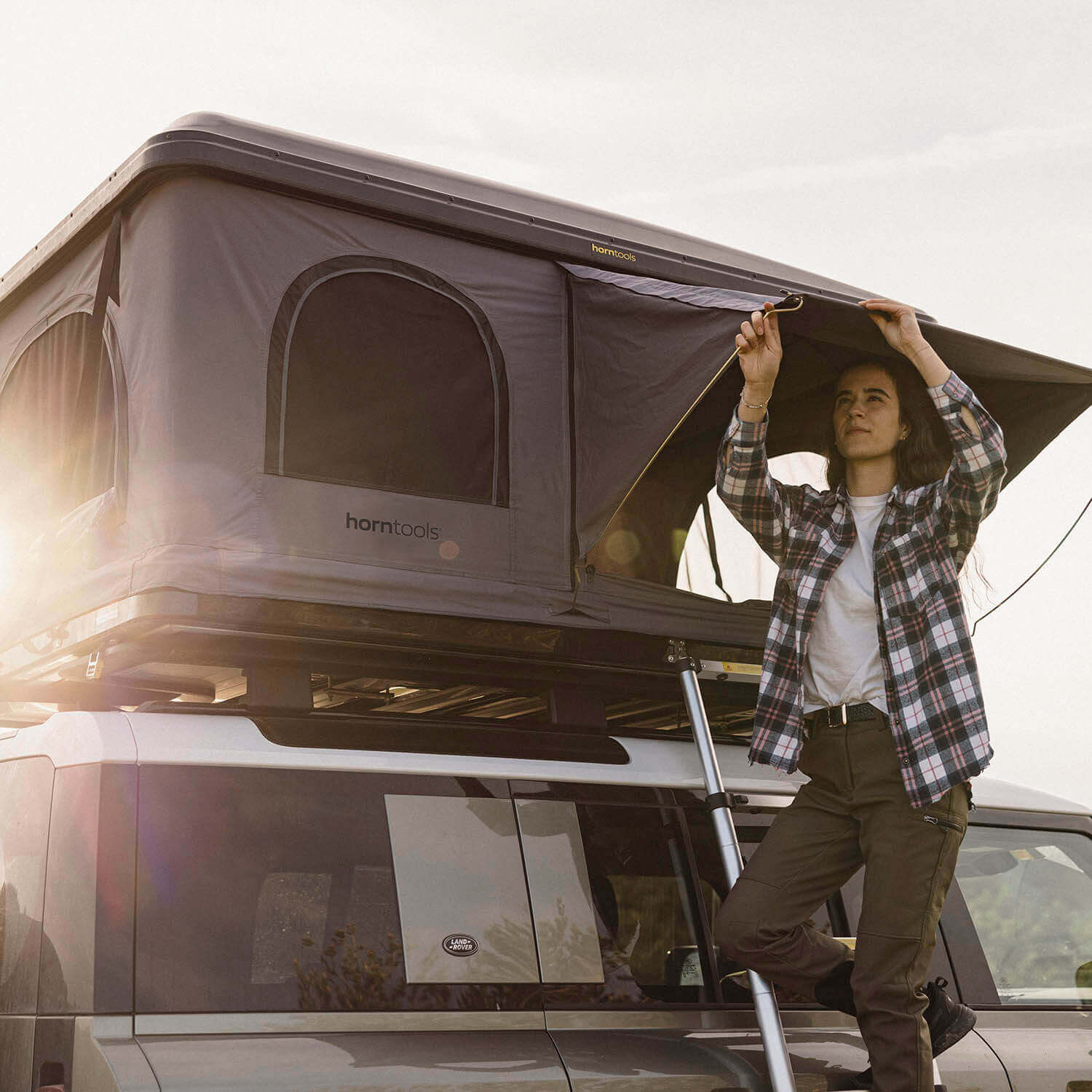
Thémis Gen II
The new hard shell car tent from horntools. Set up in under three minutes, it offers plenty of space and comes with all the necessary accessories.
Discover our ThemisOur roof tents in use
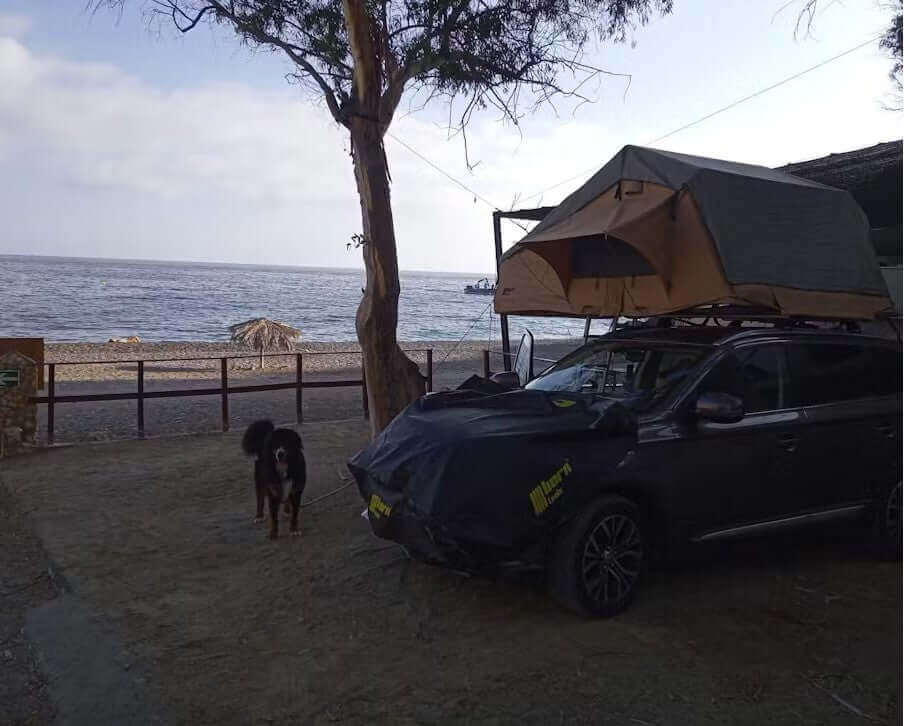
Johanna B.
Roof tent Desert
We used the roof tent on a Mitsubishi Outlander, 2 adults + dog. Setting up and taking down is simple and logical. The roof tent made us very flexible, everything was quickly packed up and ready for the onward journey. The annex room was easy to assemble and made it possible to sit together nicely, even in bad weather.
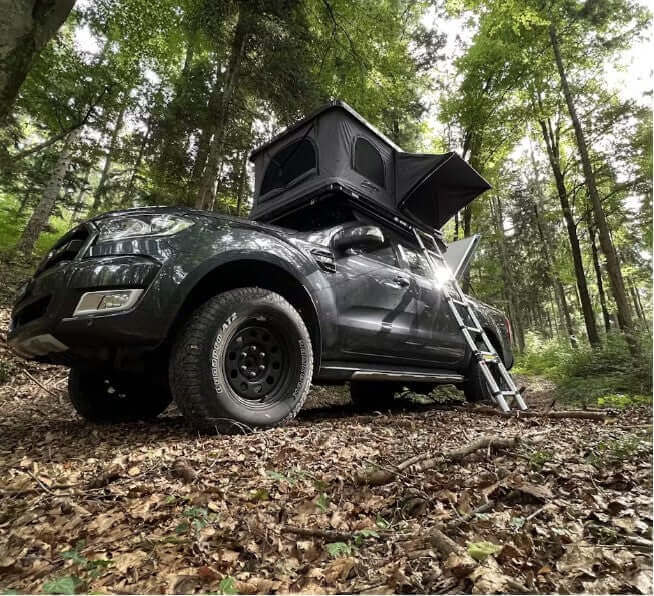
toit_aventure
Hard shell tent Themis
We decided on this roof tent a few months ago after very intensive testing, advice etc. from x different brands. We are completely satisfied and can recommend it to anyone who wants a hard shell roof tent. The on-site advice and installation was also highly professional.
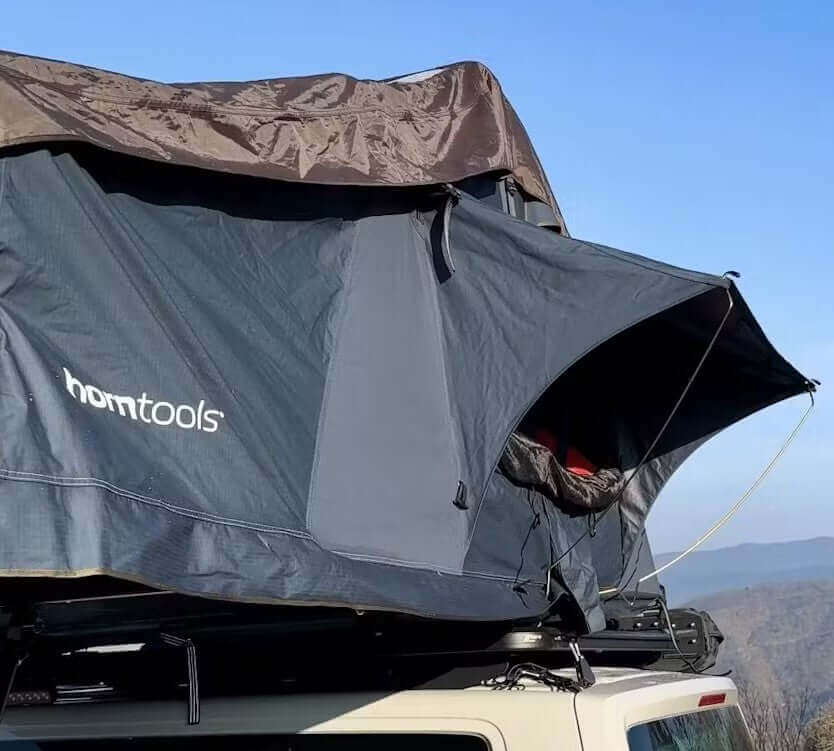
Stéfanie M.
Testimonials
Après plusieurs jours de recherche, nous avons opté pour les Elements bleus en 140 cm. Principalement à cause de la marque et des nouvelles fonctionnalités. Commandé en mars et j'y ai déjà passé cinq nuits. Je dois dire... Finition TOP et super confortable. L'échelle est très pratique et la tente se monte en quelques minutes seulement. Nous attendons avec impatience le printemps et avons hâte d'aller bientôt en Espagne !!
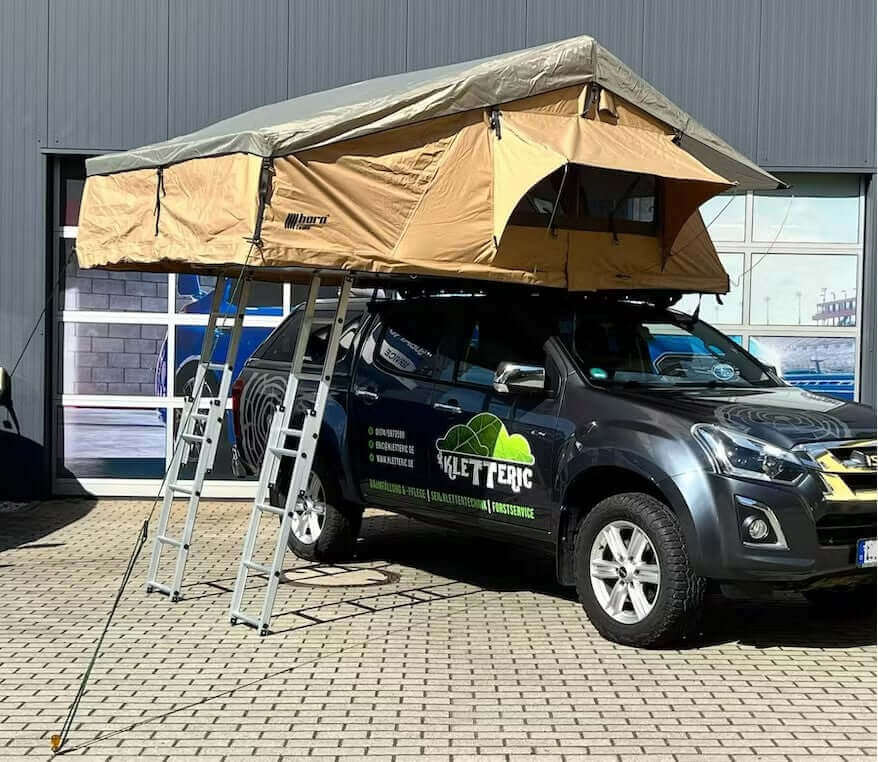
Éric P.
Roof tent Desert 220
We opted for the Desert 220. It offers more than enough space for 2 adults and two children aged 3 and 7. It was mounted on an Isuzu DMAX and a Horntools Navis was also installed as the base carrier. The first night even brought pouring rain, we all stayed dry and the accessories supplied are also great! We are looking forward to the coming adventures!
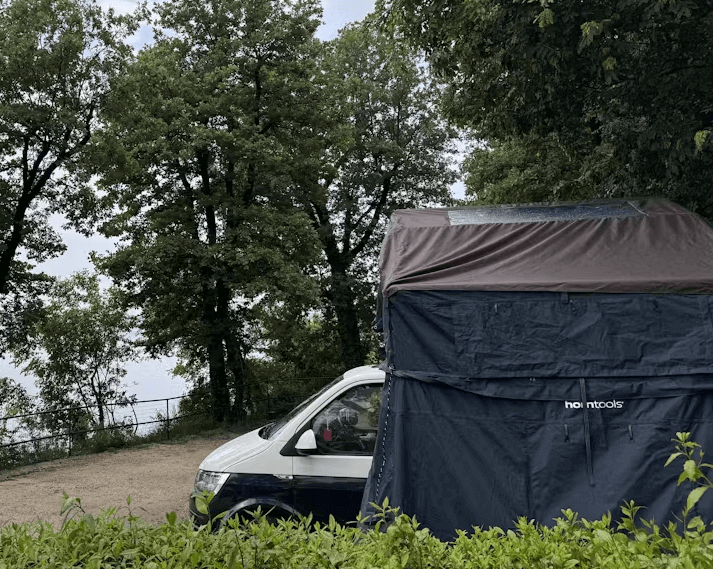
Christophe
Tolles Zelt
Super Zelt. Haben es bereits 10 Tage benutzt. Auch bei vielem Regen blieb es dicht. Die Teleskopleitern sind auch besser da die nicht so quietschen wie die Aluleitern. Zusätlich kann man die zum auf und abbauen nutzen um besser dran zu kommen.

Gerhard & Anke
Liebe auf den ersten Blick :)
es war für uns Liebe auf den ersten Blick, das Hartschalen Dachzelt Themis lässt keine Wünsche offen.
Vielen Dank und viele Grüße.
Gerhard u. Anke
PS: Grüße an Belinda, für die geduldige u. sehr gute Beratung.
Art des Dachzelts
Was sind die Vorteile eines Hartschalendachzelts?
✅ Feste Schalenkonstruktion: Dadurch ist das Dachzelt auf dem Dach flacher und aerodynamischer.
✅ Widerstandsfähige Hartschale: Diese schützt dich vor jedem Wetter und lässt dich besonders sicher fühlen.
✅ Zeitsparend: Das horntools Hartschalen-Dachzelt ist in unter drei Minuten aufgebaut. Du sparst dir zusätzliche Zeit, indem du dein Bettzeug im zugeklappten Zustand im Dachzelt verstaust.
✅ Beschauliche Größe: Das Dachzelt überschreitet meist nicht die Seitenspiegel deines Fahrzeuges, so kannst du so gut wie überall an erlaubten Standorten problemlos übernachten.
Was spricht für ein Klappzelt?
✅ Preislich günstiger: Dafür brauchst du aber etwas mehr Zeit für den Aufbau.
✅ Niedriges Gewicht: Optimal für Fahrzeuge mit niedrigerer Dachlast.
✅ Sehr geräumig: Bist du mit Kind (ern) unterwegs, dann bietet dir ein Klappzelt genügend Platz.
✅ Überlappende Fläche bietet einen Schattenplatz: So brauchst du zumeist keine zusätzliche Markise.
Klappzelt oder Hartschalen Dachzelt – was ist besser geeignet?
Die Wahl zwischen einem Klapp- und Hartschalen-Dachzelt hängt von deinen persönlichen Nutzungsanforderungen, Vorlieben und deinem Budget ab.
Das Klappzelt ist auf einer Aluminiumplatte montiert, wird durch Ausklappen der Platte aufgestellt und im geschlossenen Zustand durch eine Gummiabdeckung geschützt. Geschlossen ist es rund 10 cm höher als das Hartschalen-Dachzelt.
Es gibt nicht die eine Dachzeltvariante, die im Vergleich pauschal mehr Vorteile bietet als eine andere. Es ist wichtig, auf seine eigenen Bedürfnisse zu schauen und diese mit den Pros und Contras der jeweiligen Dachzelt-Variante abzustimmen. Hier nochmal ein Vergleich zwischen Klappzelt und Hartschalenzelt, der bei der Entscheidungsfindung helfen kann:
In unserem ADVENTURER Magazin findest du zusätzlich einen Artikel mit einem ausführlichen Vergleich zwischen Klappzelt und Hartschalenzelt. Wenn du unsicher bist, schau doch gerne auch in einem unserer zahlreichen horntools Showrooms vorbei. Dort kannst du unsere Dachzelte probeliegen, die Funktionen entdecken, vor Ort kaufen und optional auch montieren lassen.
Wie viel kostet ein Dachzelt?
Klappzelte sind grundsätzlich günstiger als Hartschalen Dachzelte. Das Klappzelt Desert variiert je nach Größe zwischen 1.590 und 2.490 Euro und das neue Dachzelt Elements in den Farben Ocean & Stone liegt bei 2.190 bis 2.990 Euro. Das bewährte und preisgekrönte Hartschalenzelt Themis kostet 2.990 Euro.
Wie viel Platz bietet ein Dachzelt?
Je nach Modell bieten Dachzelte Platz für bis zu 4 Personen (2 Erwachsene und 2 Kinder). Pauschal kann man sagen, dass die 140 cm Matratze für zwei Erwachsene, die 165 cm Matratze für zwei Erwachsene + ein Kind und die 220 cm Matratze für zwei Erwachsene + zwei Kinder ausgelegt ist.
Welches Dachzelt ist für 4 Personen geeignet?
Für 4 Personen bzw. Familien sind besonders die Dachzelte Elements in den Farben Ocean und Stone sowie Desert in der 220cm-Variante geeignet. Diese Modelle sind mit zwei separaten Leitern und einer Trennwand ausgestattet. Das Autodachzelt ist also in zwei voneinander abgetrennte Räume/Kammern aufgeteilt und bietet somit ideal Platz für 4 Personen. Die Trennwand wird mithilfe eines Klettverschlusses befestigt und kann bei Bedarf auch entfernt werden. Die Länge der Liegefläche beträgt dabei immer um die 230 cm. In unserem Magazin-Artikel Dachzelt für 4 Personen findest du einige wichtige Tipps & Tricks zum Dachzelt-Reisen mit der Familie. In unserem Sortiment findest du auch praktisches Zubehör wie z.B. einen Klettverschluss für das Dachzelt Desert im Set mit 2 Stück.
Dachzelt Montage und Lagerung
Auf welches Auto passt ein Dachzelt?
Prinzipiell kannst du ein Dachzelt auf jedes Auto montieren, allerdings ist ein auf dem Autodach befestigter Dachträger dafür erforderlich.
Es spielt dabei keine Rolle, ob es sich um zwei Querstreben als Träger oder um eine Dachträgerplattform handelt. Wichtig ist, dass das Autodach in der Breite und Länge ausreichend Platz für das Dachzelt bietet und die Breite des Dachträgers mit der Dachzelt-Halterung kompatibel ist.
Außerdem muss die vom Auto-Hersteller vorgegebene zulässige Dachlast für die Montage von Dachträger und Dachzelt beachtet werden. Diese findet man normalerweise im PKW-Handbuch oder ist direkt beim jeweiligen Hersteller zu erfragen. Für kleinere Fahrzeuge mit geringerer zulässiger Dachlast empfehlen sich daher Klappzelte mit weniger Gewicht.
Was bedeutet Dachlast?
Die Dachlast, von der der Fahrzeughersteller im Handbuch spricht, ist die dynamische Dachlast. Es handelt sich also um die zulässige Last, die während der Fahrt auf dem Dach deines Fahrzeugs erlaubt ist. Hast du bei deinem Fahrzeug z.B. eine Dachlast von 80 kg vorgegeben, darf dein Dachzelt + Dachträger maximal 80 kg wiegen. Im ruhenden Zustand kann dann aber ohne Bedenken im Roof-Tent übernachtet werden.
Welche Dachlast brauche ich für ein Dachzelt?
Es gibt keine pauschale Dachlast für ein Dachzelt. Das hängt immer individuell vom Gewicht des Dachzelts ab. Wiegt ein Dachzelt beispielsweise 50 kg, kann inklusive Dachträger eine maximal zulässige Dachlast des Fahrzeugherstellers von 70 kg ausreichend sein. Wiegt das Dachzelt aber z.B. 70 kg, ist dementsprechend eine höhere Dachlast erforderlich.
Brauche ich für ein Dachzelt einen speziellen Dachträger?
Ein auf dem Auto befestigter Dachträger ist Voraussetzung für die Montage eines Dachzelts. Solange die Breite der Träger mit der Dachzelt-Halterung kompatibel ist, kannst du auf jedem Dachträger ein Dachzelt montieren.
💡Tipp: Du besitzt noch keinen passenden Dachträger? Dann schau dich gerne bei unseren Halterungen um – alternativ kann auch eine Dachträgerplattform oder ein Querstrebenträger eines anderen Anbieters verwendet werden.
Wie montiere ich mein Dachzelt?
Für die Dachzeltmontage musst du das Zelt auf deinen Dachträger hochheben. Das geht am besten mit der Hilfe von zwei bis vier Personen. Anschließend wird das Dachzelt an vier Stellen mittels Schrauben und Gegenplatten auf den Dachträger montiert.
Achtung: Die Befestigungsschrauben der Slider sind aus Edelstahl und sollten nur handfest angezogen und am besten bei jeder Montage geölt werden.
Das gesamte Befestigungsmaterial und Werkzeug wird mit unseren Dachzelten mitgeliefert. Detaillierte Anleitungen findest du in unseren Montagevideos auf den jeweiligen Produktseiten.
Wie lange dauert der Dachzelt Aufbau?
Wie lange man für den Aufbau des Dachzelts benötigt, hängt natürlich vom Dachzeltmodell ab. Generell lässt sich festhalten, dass der Aufbau eines Hartschalenzelts rund 3 bis 5 Minuten in Anspruch nimmt und der Aufbau eines Klappzelts zwischen 7 und 20 Minuten. Nach 2-3-maligem Aufbauen und mit etwas Übung gestaltet sich der Dachzelt Aufbau generell sehr einfach.
Wie lagere ich mein Dachzelt?
Wenn du dein Dachzelt oder deine Markise länger nicht benutzt, z.B. über die Wintermonate, ist es sinnvoll, diese abzubauen. Das dient nicht nur dem Schutz und zur Erhaltung der Produkte, sondern lässt auch dein Fahrzeug sparsamer sowie sicherer (ohne zusätzliche Aufbauten) fahren. Das Dachzelt sollte nur zusammengebaut und verschlossen werden, wenn es komplett trocken ist. Feuchtigkeit könnte auf längere Sicht Schimmelbildung zur Folge haben.
Kann man ein Dachzelt das ganze Jahr über auf dem Auto lassen?
Theoretisch kann man das Dachzelt - egal ob Klappzelt oder Hartschalen Dachzelt - das ganze Jahr auf dem Auto lassen. Durch den Gummiüberzug oder die Hartschale ist es vor jedem Wetter gut geschützt. Um das Gesamtgewicht des Fahrzeugs und somit den Spritverbrauch zu reduzieren, lohnt es sich aber, das Dachzelt zu demontieren, wenn es länger nicht in Gebrauch ist.
Pflege eines Dachzelts
Muss ich das Dachzelt lüften?
Das Geheimnis für eine lange Lebensdauer deines Dachzelts lautet: Lüften, lüften, lüften – und das bereits während der Nutzung. Lüfte dein Dachzelt auch auf Reisen regelmäßig, idealerweise bei sonnigem Wetter. Öffne dafür am besten alle Fenster, um möglichst viel Luftzirkulation zu haben. Zusätzlich empfehlen wir, gegen Feuchtigkeitsbildung eine Matratzen-Unterlage zu verwenden.
Wie reinige ich ein Dachzelt?
Das Dachzelt sollte nur mit kaltem oder lauwarmen Wasser und einer weichen Bürste gereinigt werden. Verwende keine Chemikalien, Seifen oder Reinigungsmittel. Die Reißverschlüsse leben am längsten, wenn du sie mit Silikonspray einsprühst. Falls sich Schimmel bilden sollte, diesen mit einem Schwamm entfernen und dann das Zelt vollständig trocknen lassen. Danach am besten neu imprägnieren.
Wie pflege ich ein Dachzelt?
Damit du auch nach dem Kauf die Langlebigkeit deines Dachzelts sicherstellen kannst, gibt es einige empfohlene Pflegehinweise:
Die Nähte deines Dachzelts sind das Herzstück, deswegen müssen sie besonders sorgfältig gepflegt werden. Damit sie lange halten, dürfen sie nicht komplett austrocknen, da das zum Brechen der Nähte führen kann. Wir empfehlen daher, sie regelmäßig zu kontrollieren und mit einem Block Bienenwachs zu behandeln. Das bringt Elastizität in die Nähte und fördert die Wasserdichtheit. Sollten die Nähte dennoch undicht werden, kannst du mit Nahtdichter Abhilfe schaffen. Zudem benötigen die Reißverschlüsse eine Behandlung mit Silikonspray, um eine zuverlässige Funktionsweise sicherzustellen.
Hier erfährst du mehr über die richtige Pflege und Reinigung deines Dachzelts.
Muss ich ein Dachzelt imprägnieren?
Alle Dachzelte werden frisch imprägniert geliefert. Das kannst du je nach Verwendung alle ein bis zwei Jahre wiederholen. Dafür nutzt du am besten ein hochwertiges Mittel bzw. Imprägnierspray aus dem Zelt- oder Outdoor-Fachhandel – das bringt Wasserdichtheit und UV-Schutz.
Unterwegs mit dem Dachzelt
Wo darf ich mit dem Dachzelt übernachten?
Wildes Camping in der Natur, also das Übernachten an nicht ausgewiesenen Campingplätzen, ist in vielen Regionen rechtlich reguliert oder sogar untersagt. Gerade in Österreich und Deutschland gibt es hierzu strenge Vorschriften. Dabei gilt immer: Ausgewiesene Naturschutzgebiete sind zum Übernachten tabu. Eine gute Ausweichmöglichkeit bieten sowohl Privatgrundstücke als auch private Wälder – Wild Campen ist hier aber nur mit der ausdrücklichen Erlaubnis des Eigentümers möglich. Eine Nacht auf Rast- oder Parkplätzen ist grundsätzlich verboten, außer es dient zur Wiederherstellung der eigenen Fahrtüchtigkeit.
Beachte stets: Jedes Land hat andere Gesetze! Schweden, Norwegen und Finnland gelten als absolutes Paradies für Wildcamper, wohingegen sich der Westen und Süden Europas als eher schwierig gestaltet. Informiere dich in jedem Fall vor deiner Reise gründlich über legale Wildcamping-Möglichkeiten und erkundige dich im Zweifelsfall bei der zuständigen Gemeinde oder örtlichen Polizeistation.
Brauche ich fürs Dachzelt einen Schlafsack?
Alle unsere Dachzelte sind mit einer mindestens 7 cm dicken und bequemen Matratze ausgestattet. Die meisten Leute verwenden zum Übernachten im Dachzelt einen Schlafsack. Letztlich kommt es natürlich auf die Temperaturen im Reiseland an. Bei kühlerem Wetter macht es auf jeden Fall Sinn, einen funktionalen Schlafsack zu verwenden. Achtung: Auch an Sommertagen kann es in einigen Regionen in der Nacht deutlich abkühlen. Wir haben einen 3-Jahreszeiten Schlafsack im Sortiment, mit einer guten Feuchtigkeitsregulierung und wasserabweisenden Kunstfaser-Isolation. Durch die Synthetik-Füllung ist dieser Schlafsack sehr pflegeleicht und eignet sich optimal fürs Übernachten im Dachzelt.
Wie schnell darf ich mit dem Dachzelt fahren?
Generell wird eine Höchstgeschwindigkeit von 100 - 130 km/h empfohlen, je nach Fahrzeugmodell. Bitte beachte, dass sich die zusätzliche Höhe des Dachzelts auf die Gesamthöhe des Fahrzeugs und somit auch auf das Fahrverhalten auswirken kann. Speziell bei stärkerem Wind ist darauf zu achten.
Finde deinen Händler
Du möchtest unsere Produkte live erleben oder dich persönlich beraten lassen? Finde hier den nächsten Händler bei dir in der Region.





